Fiona Ingram's Blog, page 23
February 22, 2022
TV Series review: Don't Miss Manhunt!
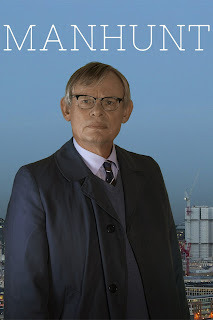
Manhunt is a true crime UK series starring Martin Clunes as DCI Colin Sutton, a now retired Inspector (Senior Investigating Officer) with the London Police Department. The first season covered the crimes committed by serial killer Levi Bell and his apprehension. The second season covered the truly heinous and chilling crime spree of serial rapist Delroy Grant who terrorised the nation for over 17 years. I won’t focus on the details of the stories themselves which have been publicly recorded but want to discuss the actual productions. The criminals are real people who ran amok with their rampant crimes. In the case of Grant, he was a criminal with a clever modus operandi and a tell-tale signature. While Levi Bell was a clumsy killer, Grant was a sly and elusive predator.
For me the second season was the most moving and I almost did not watch it. Once I started viewing, I was riveted. There are no theatricals and dramatics here. The episodes unfold as if the audience is shadowing the Inspector and his team themselves. The daily drudge of finding clues, only for these to be dead ends, the wearing boredom of stakeouts which are never as exciting as the movies, the sheer inability to catch the guy, which led to low morale and depression, and the lack of manpower. The elusive nature of Delroy Grant, with his cunning almost-fox-like ability to sense when the police were about to pounce, the suspense and tension when they just miss him was palpable.
The nature of Grant’s crimes was heart-breaking. He preyed sexually upon the elderly and the vulnerable, women and men; people who would perhaps not speak up about what really happened because of shame, belonging to a generation where the unspeakable was never spoken about. The actors portraying these elderly victims were phenomenal. I felt the rage and helplessness the police officers must have felt when they hesitatingly recounted their hideous experiences, some using old-fashioned terminology belonging to another era. I cried seeing these moving portrayals. These actors were so convincing that in the moment of watching, I believed I was seeing the real victims.
If you think you are going to see Doc Martin playing a cop, think again. Martin Clunes brings an incredible sensitivity to the role, much needed when gently asking a victim what happened, and knowing they can barely bring themselves to speak of the unspeakable. The always watchable Claudie Blakley plays his wife. The rest of the cast are stellar, no matter the size of the role being played. One can only imagine how each cast member felt when considering their own elderly parents and relatives. A very moving series that should not be missed.
February 18, 2022
Book Spotlight: Mindset Medicine by Mari L. McCarthy

Want the Cure for Culture Chaos? Grab your pen and pad and prescribe yourself, Mindset Medicine: A Journaling Power Self-Love Book. The news, the fear, the media, the texts, the constant bombardment of electronic sludge. It can all tear you down and rip you away from being YOU! You can choose to give into this madness and be manipulated into submission. Or you can join the Journaling Power Revolution, reconnect with your higher self, and love yourself without conditions.
In her third book, award-winning international bestseller author Mari L. McCarthy reveals a journaling power path that leads to an awareness of how vibrant your life will be when you…
· Understand why you absolutely have to love yourself first
· Tap into your hidden gifts and talents
· Declare why others must ALWAYS respect you
· Establish rock-solid unbreakable boundaries
· Promise to be YOUR own superhero!
Most importantly, Mindset Medicine explains in rich detail why the most empowering and loving relationship you can ever have – is with YOU!

About the Author: Mari L. McCarthy, Founder and CEO - Chief Empowerment Officer of CreateWriteNow.com, teaches curious health-conscious action-takers how to use Journaling For The Health Of It®️ to heal the emotional, creative, physical, and spiritual issues in their tissues. She also shows them how to use this powerful personal transformation tool to know, grow and share their True Self. Mari is the multi award-winning author of Journaling Power: How To Create The Happy, Healthy Life You Want To Live, Heal Your Self With Journaling Power and Mindset Medicine: A Journaling Power Self-Love Book. She’s also created 20+ Journaling For The Health Of It® Self-Management 101 Workbooks including Who Am I?, Take Control Of Your Health! and Start Journaling For The Health Of It® Write Now.
Find out more about Mari by visiting her website CreateWriteNow.com, or follow her on Facebook, Twitter, LinkedIn, or YouTube.
February 3, 2022
(What You Don't Know About) I Am Not Brad Pitt
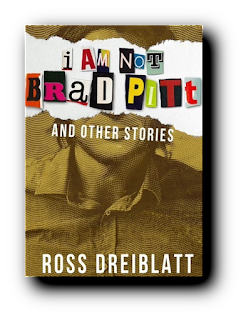
I AM NOT BRAD PITT is the first of three riotously absurd tales in Ross Dreiblatt’s debut short-story collection sending up America’s sometimes-fatal celebrity obsessions. “I Am Not Brad Pitt” opens in a prison cell in which Mr. Pitt’s clone-like doppelganger, Tobey Crawford, remorsefully recounts the sequence of unlikely events that resulted in his wrongful conviction for murder. The second story, “Please Allow Me To Introduce Myself,” considers the possibility that Keith Richards (along with, for good measure, Dolly Parton) is, indeed, a vampire. Nobel-Prize laureate Bob Dylan, the story’s vampire-killer, is equipped with more than just a harmonica and tambourine. The final work in the collection, “Keeping Compliant With The Kardashians,” examines whether Kardashian family members are, in fact, aliens from another galaxy and what precisely is their interest on Earth. Each of the stories are told with engaging humor, and each pokes fun more at American culture than they do, generally, of the celebrities themselves.
Top Ten Things You Might Not Know About I Am Not Brad Pitt and Other Stories
1. The first draft of I am not Brad Pitt was: I am not Tom Cruise
2. I changed it to Brad Pitt because I couldn’t find a way to write about Tom Cruise’s Scientology connection without it becoming a distraction from the main narrative. Also, there are way too many people who look like Tom Cruise.
3. I had to keep a Brad Pitt timeline of his movies and his haircuts on my computer to keep the story accurate.
4. The airline pilot in the Brad Pitt story is named Craig. I name all pilots Craig in any story I write as a shout out to my cousin Craig who refuses to fly after a particularly rough flight that he had years ago.
5. The first draft of Keeping Compliant with the Kardashians had an alien life form living in her breast implants. Seriously. Big shout out to my agent for saying, “Umm, no.”
6. I googled Kim Kardashian's house and went on a virtual tour to describe her house accurately. It felt a little stalkerish.
7. Other places I went on a virtual tour for Keeping Compliant with the Kardashians:
a. The Prada Store on Rodeo Drive in Beverly Hills.
b. The Peacock Café in Georgetown DC.
c. Maddie Ellis, the main character’s condo in Washington DC.
d. The Rayburn House Office building housing congressional offices.
e. Canal Park in Washington DC.
f. The hotel where Maddie tracks down Spencer in Chile.
g. FYI, Maddie’s Hollywood Hills cottage was a place I used to live.
8. Although Keith Richards and Bob Dylan are arch enemies in “Please Allow Me To Introduce Myself,” they have played together a few times and Keith has said, “I’d work with Bob anywhere. I’d work with Bob in hell or heaven. I love him.” Hmmm.
9. The protagonist in Please Allow Me is named Darla. I had imagined a very southern gothic upbringing for the character and decided that her mother named her after one of the Little Rascals.
10. Darla confronts her bandmates at Café Reggio in the Village. Café Reggio was where I would do re-writes of the book, so a very meta scene for me.

About the Author: Ross Dreiblatt was born and grew up in New York. His father was a truck driver and his mom was a retail manager. He attended Hofstra University and moved to Los Angeles where he attended Cal State Northridge. While in Los Angeles, he studied under John Rechy’s master writing workshop at UCLA. He has worked in the corporate offices of major retailers in Los Angeles, San Francisco, New York City, and Florida toiling on spreadsheets by day, and the imaginary lives of celebrity monsters by night. He loves to travel and will get on a plane going anywhere, as long as it eventually lands safely. Despite the dour photo, he is kind of a happy guy. He currently lives in South Florida. You can visit his website at www.RossDreiblatt.com or connect with him on Twitter , Facebook or Instagram .
January 14, 2022
Book Feature: Fighter Pilot's Daughter by Mary Lawlor

Fighter Pilot’s Daughter tells the story of the author as a young woman coming of age in an Irish Catholic, military family. Her father, an aviator in the Marines and later the Army, was transferred more than a dozen times to posts from Miami to California to Germany as the government demanded. For her mother and sisters, each move meant a complete upheaval of ordinary life. The car was sold, bank accounts closed, and of course one school after another was left behind. Friends and later boyfriends lined up in memory as a series of temporary attachments. The story highlights the tensions of personalities inside this traveling household and the pressures American foreign policy placed on the Lawlors’ fragile domestic universe.
The climax happens when the author’s father, stationed in southeast Asia while she’s attending college in Paris, gets word that she’s caught up in political demonstrations in the streets of the Left Bank. It turns out her strict upbringing had not gone deep enough to keep her anchored to her parents’ world. Her father gets emergency leave and comes to Paris to find her. The book narrates their dramatically contentious meeting and the journey to the family’s home-of-the-moment in the American military community of Heidelberg, Germany. The book concludes many years later, after decades of tension that had made communication all but impossible. Finally, the pilot and his daughter reunite. When he died a few years later, the hard edge between them had become a distant memory.
Praise
Mary Lawlor's memoir, Fighter Pilot's Daughter: Growing Up in the Sixties and the Cold War, is terrifically written. The experience of living in a military family is beautifully brought to life. This memoir shows the pressures on families in the sixties, the fears of the Cold War, and also the love that families had that helped them get through those times, with many ups and downs. It's a story that all of us who are old enough can relate to, whether we were involved or not. The book is so well written. Mary Lawlor shares a story that needs to be written, and she tells it very well. ― The Jordan Rich Show
Mary Lawlor, in her brilliantly realized memoir, articulates what accountants would call a soft cost, the cost that dependents of career military personnel pay, which is the feeling of never belonging to the specific piece of real estate called home. . . . [T]he real story is Lawlor and her father, who is ensconced despite their ongoing conflict in Lawlor’s pantheon of Catholic saints and Irish presidents, a perfect metaphor for coming of age at a time when rebelling was all about rebelling against the paternalistic society of Cold War America. ― Stars and Stripes
Fighter Pilot’s Daughter. . . is a candid and splendidly-written account of a young woman caught in the political turmoil of the ’60s and the domestic turmoil that percolated around a John Wayne figure who won the Distinguished Flying Cross, eight Air Medals and the Cross of Gallantry across three generations of starspangled blood and guts. ... Among the triumphs of the book is Lawlor’s ability to transition from academic – she is the author of two scholarly books and numerous articles about American literature and culture – to popular writing. 'I tried very hard to keep my academic voice out of the book,' said Lawlor, who will be retiring as a professor and director of American Studies after the spring semester. 'In academic writing, you explain and explain and footnote and footnote, and some of the life inevitably comes out of it. I wanted this to have life.' In so many ways it does….[particularizing] her family, including her mother, Frannie, her older twin sisters (Nancy and Lizzie) and a younger sister (Sarah). . . . In many ways the Lawlor women drive her narrative. ... Her principal focus, inevitably, is her Fighter Pilot Father, who, in her words, 'seemed too large and wild for the house.' Jack Lawlor was so true to fighter-pilot form as to be an archetype, hard-drinking, hard-to-please, sometimes (though not always) hard-of-heart. Mary does not spare those details.' ― Muhlenberg: The Magazine
This engrossing memoir adeptly weaves the author's account of growing up in a military family in the United States and Europe with domestic American and international Cold War events. Mary Lawlor's descriptions of her parents' origins and aging, and her perceptive, honest reflections on childhood and young adulthood between the 1950s and 1970s, are illuminated by the knowledge and wisdom that develop over decades of adulthood. In re-visiting her earlier life, the author reveals a process of arriving at a compassionate understanding of the significant people in it—relatives, friends, nuns, boyfriends, and draft resisters, among others—and through this, a clearer understanding of one's self. She demonstrates that comprehension of the broad historical context in which one lives—in her case, the pervasive global rivalry between communism and anticommunism, and its influences on American ideals about family roles, political values, and aspirations, which she questioned and challenged as a young woman drawn into the counterculture—is crucial for attaining such self-knowledge.
-- Donna Alvah, Associate Professor and Margaret Vilas Chair of US History, St. Lawrence University

About the Author: Mary Lawlor is author of Fighter Pilot’s Daughter (Rowman & Littlefield 2013, paper 2015), Public Native America (Rutgers Univ. Press 2006), and Recalling the Wild (Rutgers Univ. Press, 2000). Her short stories and essays have appeared in Big Bridge and Politics/Letters. She studied the American University in Paris and earned a Ph.D. from New York University. She divides her time between an old farmhouse in Easton, Pennsylvania, and a cabin in the mountains of southern Spain.You can visit her website at https://www.marylawlor.net/ or connect with her on Twitter or Facebook .
January 11, 2022
The Inspiration Behind Awakening the Avatar Within by Darren Starwynn
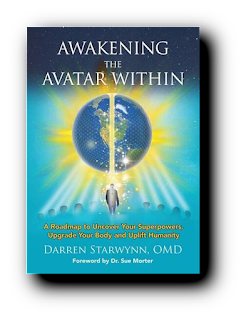 My fascination with consciousness, and what it takes to awaken it, started at a young age. I remember how in my 8th grade World History class I wrote an essay about why the material world we can see is an illusion. That perspective just popped out of my consciousness. My father was a music teacher, and his creative, whimsical nature encouraged me to see the world in unconventional ways. For example, he took our family on several cross-country camping trips when I was a young teenager. I remember saying several times “Dad – look there’s a pasture full of cows!” He would sometimes reply “Yes this side we can see look like cows, but the other side of those creatures you can’t see might be horses.” Those kinds of mind-blowing statements gave me permission to question my ideas about reality.
My fascination with consciousness, and what it takes to awaken it, started at a young age. I remember how in my 8th grade World History class I wrote an essay about why the material world we can see is an illusion. That perspective just popped out of my consciousness. My father was a music teacher, and his creative, whimsical nature encouraged me to see the world in unconventional ways. For example, he took our family on several cross-country camping trips when I was a young teenager. I remember saying several times “Dad – look there’s a pasture full of cows!” He would sometimes reply “Yes this side we can see look like cows, but the other side of those creatures you can’t see might be horses.” Those kinds of mind-blowing statements gave me permission to question my ideas about reality. I grew up in a Jewish family with parents who were basically atheists. Although they were mostly kind and supportive to me, I grew up with a deep sense of inner pain and alienation. I could sense some kind of field of higher consciousness around me, yet I felt inwardly blocked from accessing and enjoying it. My strongest motivation was to discover how to free myself from those energy blockages that were weighing me down and preventing my life from “taking off”.
As part of this quest, I journeyed to India to be with a spiritual Satguru when I was 19 years old. This teacher taught us a form of meditation that I practiced intensively for close to 20 years. Since then, I have studied with a succession of spiritual masters and teachers of medical and healing arts. I invented medical devices used worldwide, wrote four books, and treated large numbers of patients with acupuncture, energy medicine and spiritual healing methods.
I have been politically aware during the 1960s, when landmark legislation such as Medicare, the Civil Rights and Voting Rights acts were passed in the USA. Even with all the controversies and unrest it was a hopeful time for justice and human rights. More recently I’ve seen my country and others move more in a darker direction with more top-down control and escalating environmental crises. I have felt deeply motivated to discover and be part of the solution.
As a spiritual healer I’ve developed my intuitive abilities extensively and starting around 8 years ago I began to receive many clear messages from a higher spiritual source. I was shown in various ways that humanity is at a critical junction point in which we are choosing our future destiny. All the unresolved conflicts, tribalism, and control systems of the human race were coming up to the surface. It was clear that we would either awaken the higher consciousness of our true nature or descend further into injustice and planetary destruction.
I was inspired to write these messages down and share them, which I did through blogs, classes, workshops, and retreats. Eventually these messages coalesced as a coherent theme about how people can awaken their divine nature as Avatars, in similar ways that Jesus, Buddha, and other famous world teachers did. This theme of conscious awakening intertwined with a lot I was learning about Quantum physics and it all just came together. I knew I had to write this latest book about awakening the Avatar within, and also be a catalyst for others’ awakening and empowerment. Available at Amazon: https://amzn.to/33TzYcu

About the Author: Darren serves as a Reverend through the Lightworker Ministry, empowering healers and Lightworkers to live as Avatars and participate in the currently unfolding planetary ascension of consciousness. He is a graduate of the Tri-State Institute of Traditional Chinese Acupuncture and received a doctorate in Chinese Medicine in 1995 through the National Academy of Advanced Asian Medicine. He has been ordained as a Knight through the Sacred Medical Order of the Knights of Hope, a branch of the historical Knights Hospitaler from Europe. Darren also loves playing and composing music, hiking, writing, and dancing. Visit his website at www.drstarwynn.com .
January 10, 2022
My Duel With Words by romance author Virginia Barlow
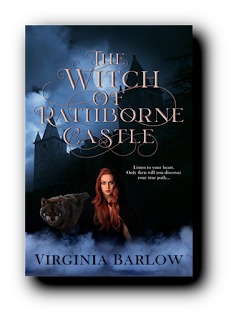
I’ve always had a fascination with reading and the effect words have on the mind. I remember my older brother and sister reading stories to me before I started school. I listened with awe and gazed with wonder at the black letters on the page, anxious for the day I, too, could make words out of the symbols. My first day of school dawned and I couldn’t wait to get to school and learn how to read. Imagine my disappointment when all we did was color, cut out, and glue. I came home and told my mom I was never going back. I gave them all day and I still didn’t know how to read. She laughed and explained it took time. Hence, my first lesson with patience, as well.
I have an affinity with language. I loved spelling, reading, composition and diagramming in school. These subjects were my forte while mathematical related subjects were not. I wrote my first stories for my children to help them with reading. I did an alphabet series with insects as in Andy Ant, Betty Bee, etc, to get them excited about reading and identifying different letters. I thoroughly enjoyed the adventure.
I dropped the writing for a few years and later I decided I wanted to do a rewrite of a familiar fairytale as more of an origin story. The idea took root and I sat down to my computer to write my first novel. The Wicked Sister is the result, and I enjoyed every minute of its creation. I still remember where I was when I received the email from The Wild Rose Pressasking me for my entire manuscript and later offering me a contract. I love being an author and creating stories that pop into my head and lead me on adventures, quests, and the need for justice.
I have a dear friend who passed away this last week. She was one of my biggest fans and cheered me on through every up and down. One of the last texts she sent me thanked me for writing stories for her to get lost in and escape for a while to another place and time. She worked forty hours a week and took care of her elderly parents, one of whom suffered with dementia. I will never forget her kind words and great support. I’m thankful my stories offered her a few moments of happiness and this, truly, is the greatest reward an author could ask for.

You can visit Virginia’s website at https://www.virginia-barlow.com or connect with her on Twitter , Goodreads and Facebook .
Virgina's paranormal romance novel The Witch of Rathborne Castle is available:
Amazon https://amzn.to/31jVXYA
Barnes & Noble https://bit.ly/3xPx1ED
January 7, 2022
The Inspiration Behind Through Dangerous Doors by Robert Charles Lee
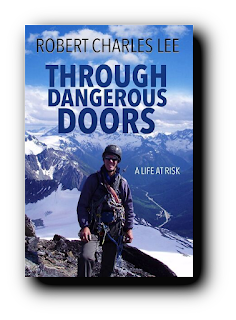 The idea for a memoir popped into my think-meat when I retired from a career in risk assessment and management. To give you a little background - for over twenty years I worked with risks ranging from exploding gas pipelines to medical errors to radioactive waste to asteroids hitting the Earth. Shortly after I retired, I realized few people I worked with (or in general) have experienced particularly risky lives, outside of everyday risks such as driving a car, eating unhealthy food, and so on. Or, they may have lived through brief risky periods, such as crazy teenage years or service in the military. In contrast, I’ve actively done and been subject to risky stuff over a period of six decades, plus I built a career focused on risk. Further, my rough childhood probably affected my lifelong views of risk. So, I thought the perspective of an author who has thought hard about risk his entire life might be interesting and entertaining. I don’t think most people think about risk in the way that I do, and I’m not aware of any similar memoirs.
The idea for a memoir popped into my think-meat when I retired from a career in risk assessment and management. To give you a little background - for over twenty years I worked with risks ranging from exploding gas pipelines to medical errors to radioactive waste to asteroids hitting the Earth. Shortly after I retired, I realized few people I worked with (or in general) have experienced particularly risky lives, outside of everyday risks such as driving a car, eating unhealthy food, and so on. Or, they may have lived through brief risky periods, such as crazy teenage years or service in the military. In contrast, I’ve actively done and been subject to risky stuff over a period of six decades, plus I built a career focused on risk. Further, my rough childhood probably affected my lifelong views of risk. So, I thought the perspective of an author who has thought hard about risk his entire life might be interesting and entertaining. I don’t think most people think about risk in the way that I do, and I’m not aware of any similar memoirs. I had some writing challenges. For example, I never kept a journal, except in the form of photographs after I bought my first camera in my late 20s. I regret not journaling my life, but I never planned to write a memoir, or write anything at all aside from scientific papers and reports and emails to my friends. I have no training in creative writing. So, embarking on a memoir was a big risk. As a test, I began by writing about a particularly life-changing period. I moved to Southeast Alaska after graduating college and worked in a dangerous job. I found I could remember this period with clarity once I got into it, even though it was in 1979. I Googled one of my old co-workers, magically found him, sent him an excerpt, and asked him whether I captured things in a realistic fashion. He replied that I captured the place, time, and people perfectly.
With this encouragement, I wrote about my early childhood, and sent excerpts to my siblings. With minor changes, they all said I captured it well. So, I started to fill in the blanks. The most recent three decades were relatively easy, as my photographs and my wife Linda functioned as memory aids and fact-checkers. I focused my stories on both involuntary and voluntary risk. For example, I’ve climbed a lot of mountains, ever since I was a teenager trying to escape a dysfunctional family. Initial drafts included more mountain climbing than the published memoir. I cut these sections down because I didn’t want the book to be about climbing. I was never a famous climber, and most people who choose books in the ‘adventure’ genre want to read about famous people doing amazing things. I wanted to entertain readers with stories about a wide variety of my life’s risks, but also educate as to how I managed them.
I can’t emphasize enough the important role of my editor, especially for somebody like me who’d never written anything substantial for a general audience. She gave me invaluable advice, such as “don’t call somebody a jerk – present the person and situation and let the reader decide if he’s a jerk.” My own music production experience helped as well. I think I’m adept at whittling down musical pieces to the essential, wheat-y parts; and discarding the chaff. There’s no chaff in my memoir, or at least I don’t think so.
As I’m naturally impatient, publishing this book was a challenge for me, especially because this occurred during the early days of the COVID-19 pandemic and the world slowed down (talk about risk. . .). I initially tried the traditional literary agent/major publishing house route. I heard crickets. I found this traditional publishing business to be a paradoxical one; very different from any other business I’d ever worked with, and I’ve worked with many. Many agents and publishing houses seem to actively discourage the author-customers who pay their bills. I don’t know how they survive.
I eventually found a publisher who employs a hybrid model under one of their imprints. The author pays a fee, but the company provides professional editorial, proofreading, publication, and marketing support. The author has a lot of control over the final product and earns higher royalties compared to traditional publishing. Compared to self-publishing, it’s less work and direct expense for the author. However, as I don’t have publishing experience with these other models, I can’t say which is best for a particular genre, author, or book.
Putting my story ‘out there’ was a big risk in itself. I was gratified when I started to get good reviews, and one even said reading my book was like watching a scary movie. However, my intent was not only to entertain, but also to educate. Another reviewer put it this way: “You can kick back and enjoy the read and its many 'holy s&%t' moments, or you can take up the challenge to think about - and to digest - the lessons learned and the impacts of choices and associated actions and outcomes.” This is exactly what I intended. Many good books I’ve enjoyed over the years have struck me in a similar fashion. I hope readers enjoy my story as much as I’ve enjoyed my life!
Through Dangerous Doors is available on Amazon.

About the Author: Mr. Lee is a retired risk scientist with over twenty-five years of academic and applied risk analysis, decision analysis, and risk management experience in a wide variety of contexts. He has authored over one hundred peer-reviewed scientific works, as well as over one hundred technical reports for industry and government agencies. Prior to this professional risk work he was a manual laborer until he reckoned that he could use his brain for a living.
January 5, 2022
Exploring the Tarot by Karen La Puma

I am a great believer in the power of Tarot, and I consult a dear friend regularly (and have done for many years) who is a gifted Tarot reader. So, I am delighted to welcome author Karen La Puma to discuss the Tarot. Frieda Harris said, “The Tarot is God’s Picture book, or it could be likened to a celestial game of chess.” The Tarot symbols are amazingly insightful pictorial mythologies that have come down through history as an unbound book of 78 cards. They represent our inner and outer experiences and operate visually, symbolically and non-linearly to reach us in the same states as dreams and meditations. The mystery of how they work is explained by synchronicity, which is a concept that Carl Jung coined to explain the meaningful coincidences or psychic orderliness that transcends time and space.
Cosmic symbols are powerful because they have multiple meanings. They are like throwing a rock in the water and the layers and layers spread out and draw us into the unconscious realms. The Tarot archetypes are steps on the journey and can be seen as verbs or actions to take. They are also forces of nature and patterns of being and can be and we can relate to them as nounsor the personification of Divinity. They could also be seen as adjectivesas they are descriptive paths. The symbols show where we are now and where we are going.
This ancient system has countless decks and expressions. The Tarot follows the general pattern of 22 Major Arcana, which represents universal principles of life. They fit perfectly with Astrology and the 10 planets and 12 Zodiac signs. They also connect with the Hebrew alphabet and the Tree of Life. The Minor Arcana consists of 56 cards. There are 4 suits that cover the elements: air or mental subjects (swords), water or emotional states (cups), fire or the perceptional nature (wands), and earth or physical and financial issues (disks). Each suit has ten cards that signify life’s opportunities, gifts and challenges. There four royalty cards that represent the teachers who have mastered the different elements. All these potencies or adapts can help you discover your inner knowing, so you can find your own answers. When you allow the Tarot to guide your growth, it is like having your own psychic at hand. As you open to these supernatural aids, they become your teachers, experiences, initiations, and the path to greater awareness.
Awaken to Tarot and its original companion deck, Awaken Tarot Cards, are a complete inner guidance system. Distilled and accessible, this combo makes cosmic archetypes available to you so you can awaken your own inner voice. Come and explore these sacred tools and commune with magical helpers.

Karen La Puma is the author of a series of books called A Toolkit for Awakening, which are based on the Goddess Warrior on the Hero’s Journey. She is a motivational, intuitive, and spiritual counselor in private practice in the Bay Area since 1979. She is a teacher, astrologer, hypnotherapist, Reiki master, inspirational speaker, and creative storyteller with a potent and timely message to empower your life. Her latest book is Awaken to Tarot: Be Your Own Guide with Astrology, Numbers and the Tree of Life . Visit her website at www.soul-source.org or connect with her on Twitter and Facebook .
December 16, 2021
Book Review: Breaking the Silence by Nancy King

Secrets. Lies. Silences. Stories told by parents and their families to protect themselves. A father who defends his wife despite her damage to their daughter’s health and welfare. A mother, shielded by her husband, who perpetuates murderous acts of violence against the daughter, and keeps secret her husband’s sexual “play” with the young girl. And yet … Nancy King, determined to learn the truth of her childhood and the heartbreaking effects it has had on her adult life, uncovers the secrets. Sees through the lies. Breaks the silence. Empowered by the stories she told herself as a child, she learns to use stories as part of her work as a university professor teaching theater, drama, world literature, and creative expression. Gradually, with the help of body work and therapy, she finds her voice. Says no to abuse and abusers. Reclaims herself and life. Writes a memoir. She climbs mountains. Weaves tapestries. Writes books. Makes friends. Creates a meaningful life. This is her story.
Review by Carmen Otto: Breaking the Silence is a book about a woman who grew up believing she was never good enough and believed everything her mother told her. Her father never stood up for Nancy and always took her mother’s side even though he saw the abuse Nancy’s mother put her through. As Nancy grows up, she decides to learn the truth about her childhood, all the lies she was told and the abuse she got put through as a child. She goes to see a therapist to help her through the trauma she had been through as a child. She starts to hike and write stories to help her through the abuse that she suffered as a child. As she ages, she learns that she should have stood up to her mother because as a child all of the emotional and physical trauma she put Nancy through made Nancy’s grown-up life a roller coaster.
I thoroughly enjoyed this book because it is about how a woman copes after being mentally and physically abused most of her life and as she gets older, she finds refuge in hiking and writing stories. At some parts I could really connect with Nancy because she is amazing at making new friends and is a great listener, she listens to everyone else's problems all while dealing with her own. I would recommend this book to anyone who grew up feeling like they were never good enough and want to become confident in who they truly are. I give this book 5 stars.

Carmen is a high school freshman from Wisconsin! She lives and works on her family’s dairy farm. Carmen is a reader, swimmer and horse lover who enjoys laughing and being silly with her friends!
December 10, 2021
Book Feature: The Man Who Transformed Africa: The Rebirth of a Continent
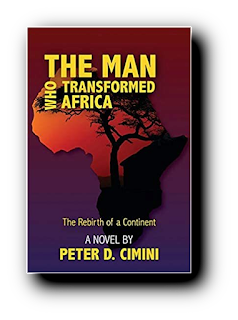 The novel opens with Vatican intrigue between liberal and conservative cardinals, which leads to the unlikely selection of an Indonesian pope. Seizing the opportunity, the new pope uses his ex-cathedra (papal infallibility) to declare poverty to be an immoral human condition. The pope decides to lead by example, taking the provocative step of selling Vatican treasures to fund a long-term plan to build a strong middle-class society in Africa. The novel follows the pope, an ex-president of the United States, and an African nationalist during the first two years of an estimated twelve-year project to build a strong African middle-class society.
The novel opens with Vatican intrigue between liberal and conservative cardinals, which leads to the unlikely selection of an Indonesian pope. Seizing the opportunity, the new pope uses his ex-cathedra (papal infallibility) to declare poverty to be an immoral human condition. The pope decides to lead by example, taking the provocative step of selling Vatican treasures to fund a long-term plan to build a strong middle-class society in Africa. The novel follows the pope, an ex-president of the United States, and an African nationalist during the first two years of an estimated twelve-year project to build a strong African middle-class society. After a year-and-a-half of steady progress, the ex-president and the African nationalist realize they have miscalculated the costs of irrigating the African tropical savannas, and the project stalls. A brilliant, young autistic project employee, originally hired to oversee the use of Africa’s natural resources, solves the irrigation problem, allowing the plan to continue moving forward. The autistic project employee later comes to the rescue once again when he clears the name of the ex-president, who had been falsely accused of bribery. The author believes the fictional narrative of this unique story will show the need to stabilize Africa’s social order, infrastructure, and land use, which would result in an economic rejuvenation of the continent, eventually turning Africa into an agricultural giant.
5 Things You Should Know About This Novel
1. This novel is a work of fiction that is dived in two parts. Part 1. The Vatican and Part 2. On the ground in Africa.
2. This novel includes only the first two years of a twelve-to-fifteen-year project to build a strong middle-class African society. Attempting to include all the years of this project would result in a dictionary length book. Second, development of characters during fifteen years would be counterproductive.
3. The Epilogue included in this novel is a snapshot of many of the characters beyond the first two years, and the increase of donations due to the surprise ending.
4 In the Vatican part of the novel there is reference to Catholic cardinals who argue over conservative and liberal Catholic interpretation.
5. Ever since elementary and going further in schooling the author was always confused by teachers who would on the one hand talk about the wealth that was underground in Africa, and the severe poverty of the African people.
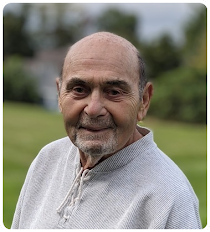
Author Peter Cimini was born in New York City, in the borough of the Bronx. He attended both a Catholic elementary and high school. Mr. Cimini holds bachelor and masters degrees from New York University. He was a teacher both in New York and Connecticut, and served students twenty years as a curriculum specialist, overseeing and writing curricula. He is also the author of The Secret Sin of Opi, on the topic of missing and exploited children. His favorite novel is Pillars of the Earth by Ken Follett. Author Cimini admires the works of writers Kristin Hannah and Nicolas Sparks. He lives in Connecticut.



